After some effort, we got our amendment trial beds finished and planted:
The final bed layout looks like this:
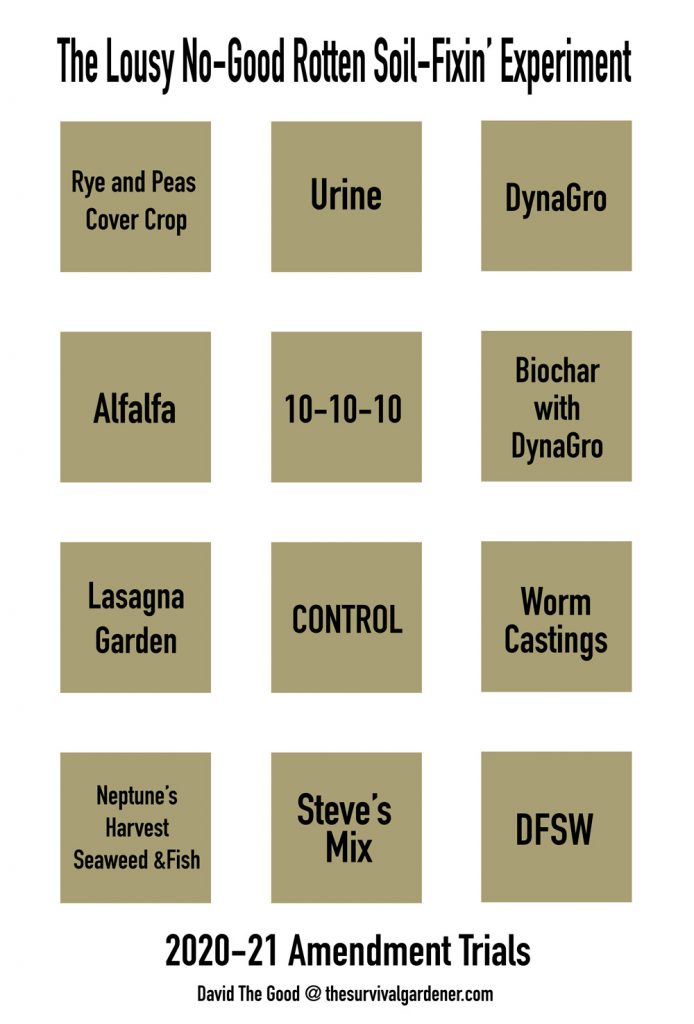
We got a decent rain right after planting these beds so we should see germination shortly. The beds were planted on October 23rd.
Many people were interested in the cost of amendments each bed. I’ll see if I can give you a rough estimate on the costs so far. The hardest one is Steve’s Mix, as I sourced materials from all over the place, in bulk, and have to divide those costs up into a tiny bed and figure it out.
Bed #1: Dave’s Fetid Swamp Water
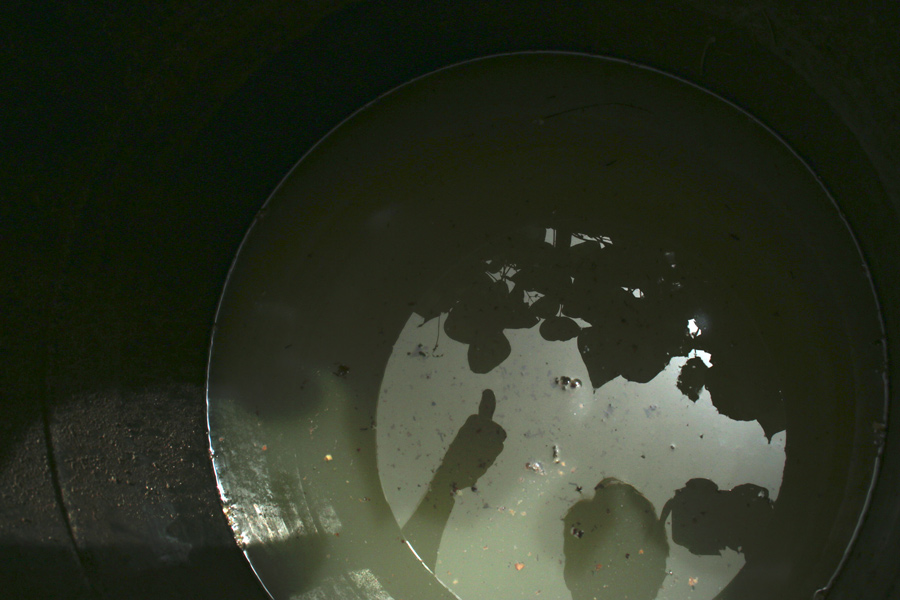
Dave’s Fetid Swamp Water can be free; however, I did throw a quart of kelp meal ($1.18) into this batch. I will also add a couple cups of Epsom Salts soon ($1.00).
DFSW is the amazing amendment I cover in Compost Everything.
Total Price for 12 weeks of application: $0.54
Bed #2: Worm castings
Worm castings aren’t cheap, but many gardeners swear by them.
We paid $17.99 for a 12lb bag at Tractor Supply.
I will start my own worm bin soon. It’s been a while since I kept them and I look forward to raising red wigglers again.
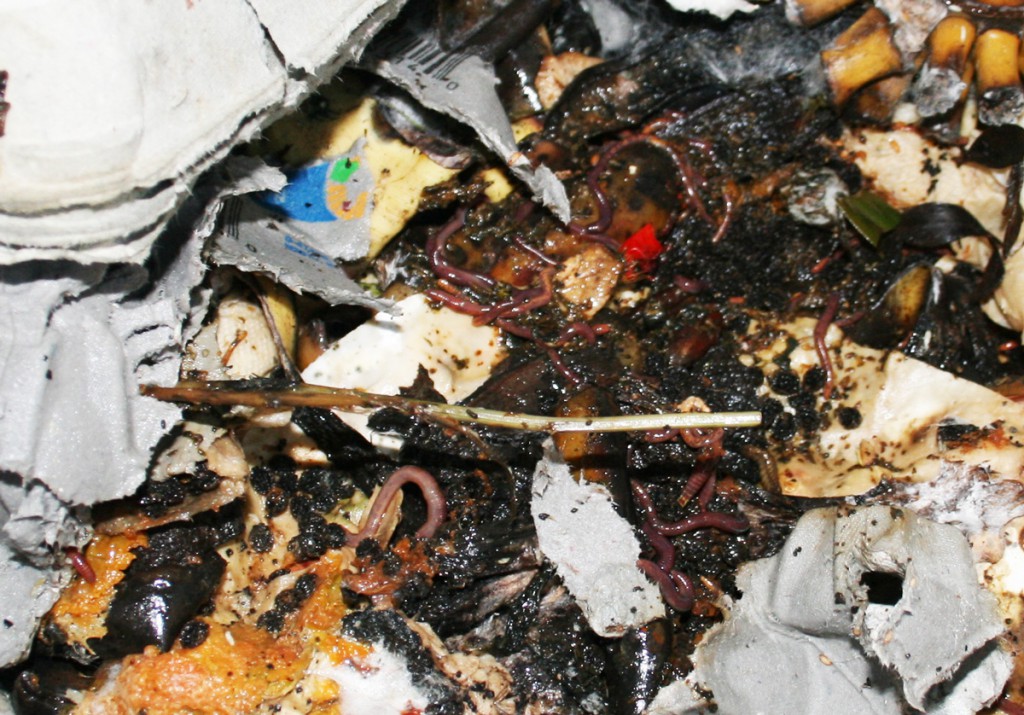
If you don’t want to raise worms, the worm castings are cheaper on Amazon.
It cost $30 to amend this bed with 20lbs of worm castings.
Total price: $30.00
Bed #3: Biochar charged with Dyna-Gro
I made my own biochar, so that part was free.
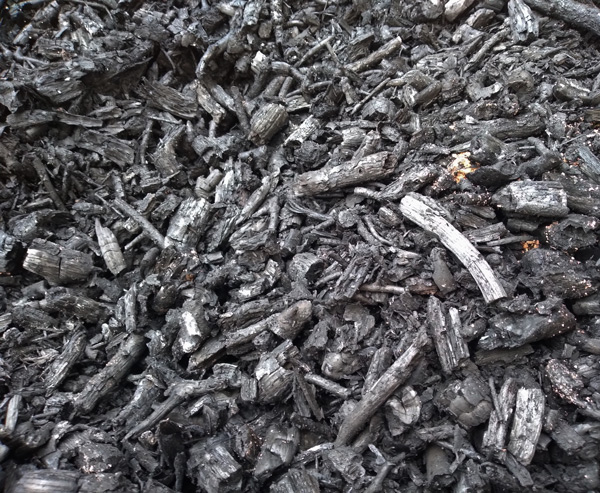
The less-diluted Dyna-Gro soak (4 times normal application rate) we used to charge it cost $0.75 for this bed.
Total Price: $0.75
Bed #4: Dyna-Gro
Dyna-Gro is around $57 a gallon.
Application to a bed this size, however, is just a teaspoon per gallon of water. 768 teaspoons are in a gallon and I would use two teaspoons per two diluted gallon application, meaning the price per application is $0.15.
Price per 2-week application: $0.75
Total Price for 12 weeks of application (6 doses): $4.50
Bed #5: Urine (diluted 6-1)
Urine and water are free.
Total price: $0.00
Bed #6: 10-10-10
8.99 a 40lb bag. Amount used 1/4lb. ($0.06 of 10-10-10)
If we have a mid-season application, it takes us up to a whopping 0.12 over the season. No wonder people use 10-10-10…
Total price: $0.06
Bed #7: Control
Nothing to see here, folks. And nothing to spend. Just dead Bama dirt.
Total price: 0.00
Bed #8: Steve Solomon’s fertilizer mix
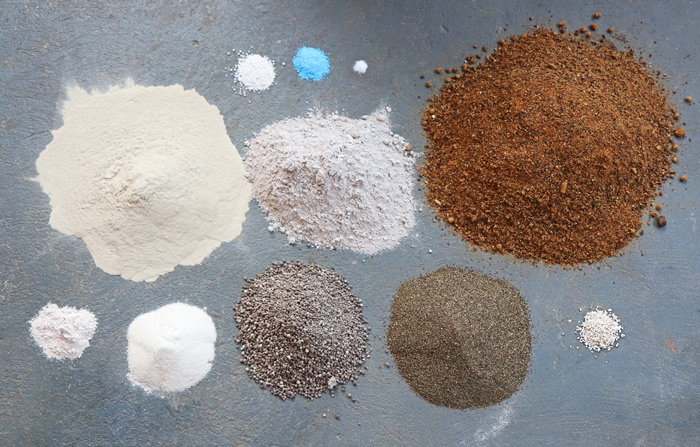
This is by far the most complicated amendment to calculate, due to the many ingredients and the tiny amounts of some of them. I will do my best. This is based on what Steve Solomon and Erica Reinheimer cover in The Intelligent Gardener, and is an intense mix of micro and macro nutrients with the goal of growing the most nutrient-dense produce possible.
The following recipe is for a 100ft2 of garden bed, so all prices at the end of each line assume dividing by 4.
4 quarts cottonseed meal (Cottonseed meal: $13.99 per 40lb bag) ($0.69 per 1 quart applied to bed)
1 quart garden lime (Lime is $6 per 40lb bag) ($0.15 of lime)
2 cups pelletized gypsum 7.99 per bag. ($0.08 of gypsum)
3.5 cups bonemeal, $8 for 4lb. ($1.00 of bone meal)
2/3 cup potassium sulfate ($6.50 for 5lb at AlphaChemicals.com) ($0.25 of K2SO4)
1.5 tbsp borax $7.99 for a 4lb box ($0.04 borax)
2 tbsp manganese sulfate ($10.50 for 5lbs) ($0.01)
2 tbsp zinc sulfate ($0.01)
2 tsp copper sulfate ($0.01)
1 quart kelp meal ($85 per 50lb bag) ($1.18)
1/8 tsp sodium molybdate ($17 per lb) ($0.01)
Total Price: $3.43
Bed #9: Neptune’s Harvest Seaweed and Fish
$35.99 per gallon (9lbs) 1 oz added to 1 gallon of water application rate. $0.24 per application.
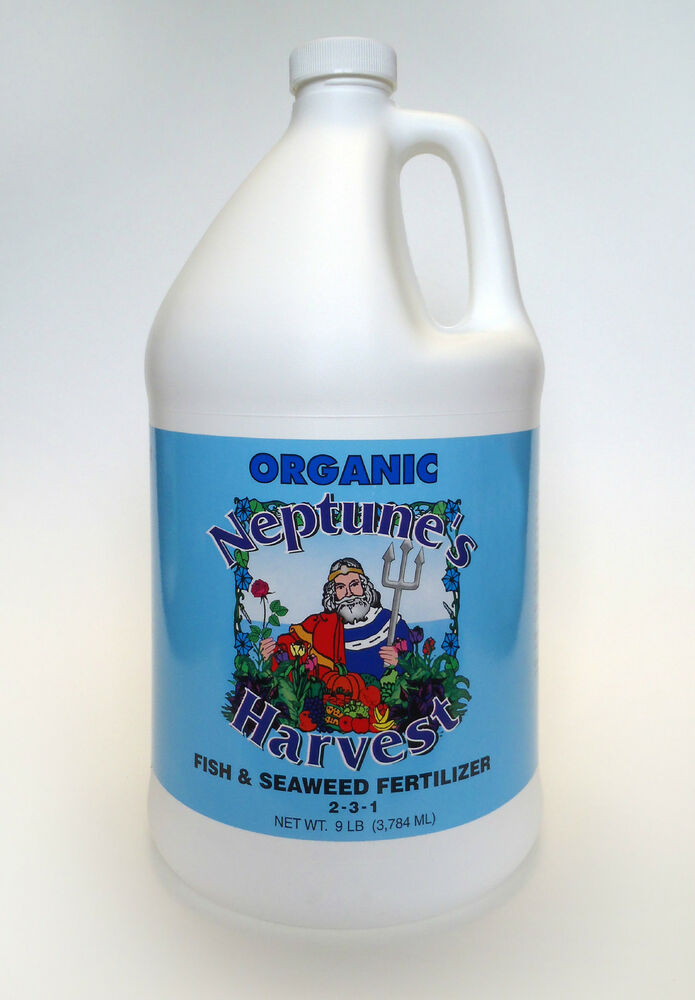 Total Price for 12 weeks of application (6 doses): $1.44
Total Price for 12 weeks of application (6 doses): $1.44
Bed #10: Lasagna garden
This bed is based on Patricia Lanza’s excellent book.
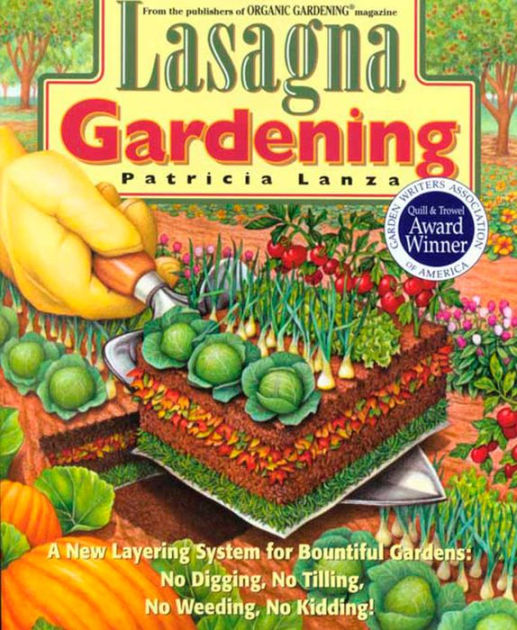 This bed was free with the exception of $1 worth of alfalfa. We hunted down the mulch, manure and other ingredients without issue.
This bed was free with the exception of $1 worth of alfalfa. We hunted down the mulch, manure and other ingredients without issue.
Total Price: $1.00
Bed #11: Alfalfa
$19.99 a bale, used 1/10 of a bale.
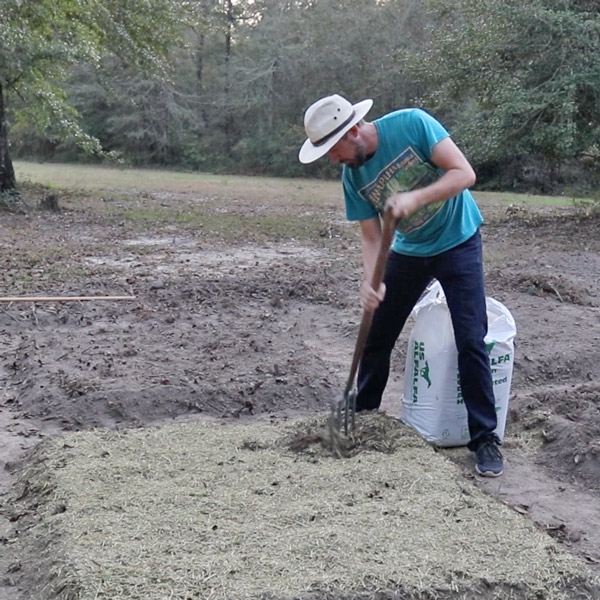
Total Price: $2.00
Bed #12: Rye and peas cover crop

Price of rye and pea seed was about $0.75, maybe. I bought both in bulk amounts for cheap.
Total Price: $0.75
And the Story Continues…
Now we get to see what happens next. Seeds should pop up any day, then we’re off to the races. Hopefully we’ll get a mild winter so we get faster growth and an earlier harvest. I don’t want these beds to continue too far into spring, as I’d like to grow warm-season crops in them then.
Which bed do you think will do the best?

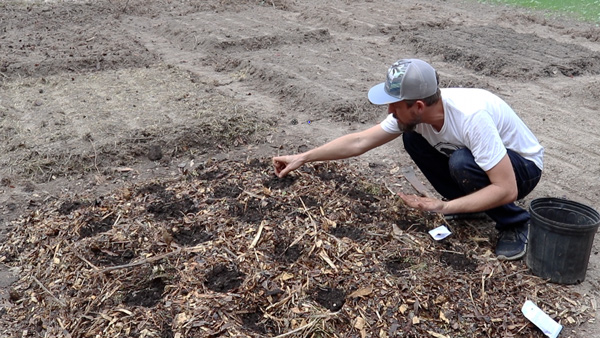
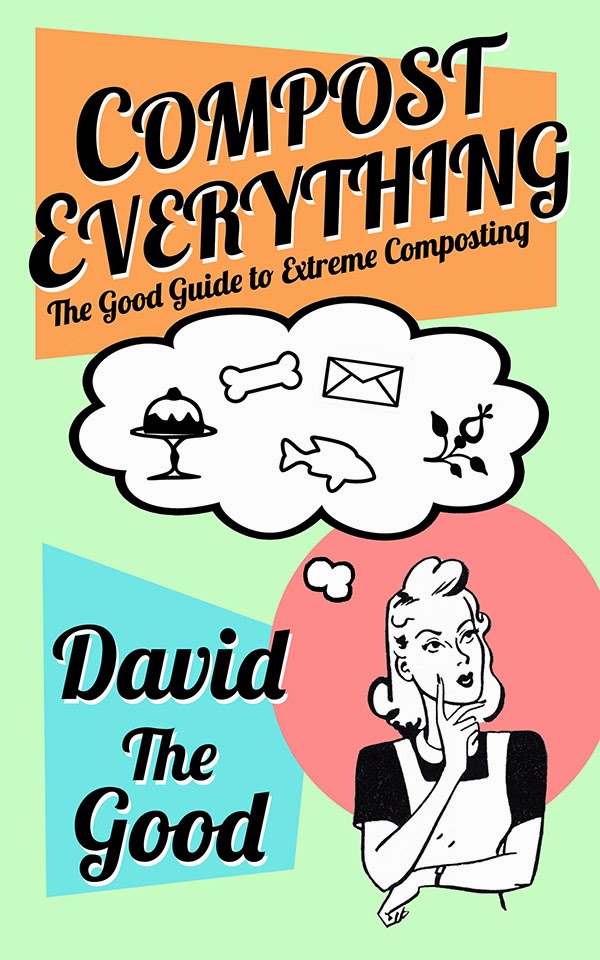
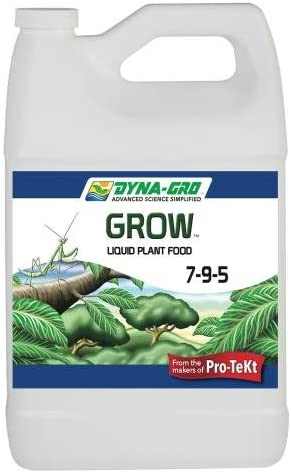
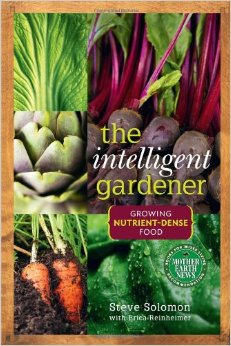
14 comments
I’m putting my money on the control bed.
Thanks for doing the math.
10-10-10
The CLASSIC(TM)
I’m not voting 10-10-10 because I thinnk the other methods are bad / worse, or, that chemical fertilizer is better.
It’s not a troll vote.
For a short term trial like this, where the soil may as well be an empty substrate, I think 10-10-10 will give everything the plants need in a readily consumable format.
For a longer term garden, and year on year benefits, I’d probably vote lasagne, as it’ll take time for the soil to condition.
Very interested to see the results.
Keep it up
If you grow the same mix of various vegetables in each bed, I would guess the dynagrow with biochar, second guess, Steve Solomon’s mix. I say “if you grow the same mix of veggies,” because I have found in my own experimental beds, that some stuff, like squash, garlic and kale will happily grow directly into a pile of finished manure compost, but other things, like jerusalem artichokes did much better in poor soil and poor soil mixed with wood chips and broken down manure…who knew???
Definitely the same veggies in each bed. And I noticed the same thing with Jerusalem artichokes – they grow great even in lousy soil.
I’m thinking the lasagna bed — the others just look so barren of organic material and look so dry. Of course, this bed also required by far the most amount of work (yes, $1 worth of alfalfa, but including labor costs would make the worm castings look cheap). My hope is that the rye and peas does well, as that’s the method I’d prefer to go with, given a large garden plot.
Yes, good point. The labor is significant. Plus I had to drive out to get amendments, and haul manure from a block away in a wheelbarrow.
I like how you do serious work in a fun way. Naturally, I’m rooting for the freest most widely available amendments. Good luck and good job!
My vote is on the lasagna garden. One because you started the seeds in a bit of compost and two the lasagna provides a nice mulch. Next choice is Steve Solomon’s mix. Can’t wait to see the actual results unfold! Great videos!
So far the seeds germinating in the lasagna bed look the best.
I’m rooting for the lasagna garden, but have a feeling the commercially bought products will do well. I am keenly interested in the results of this experiment! Coolest experiment!
I love your videos!! Informative and entertaining. This is going to be fascinating to watch. I made 3 lasagna beds in the early spring using your method and they did fantastically compared to other beds, so I’m rooting for that method!!
Thank you, DJ. I think the lasagna bed will definitely outperform.
Comments are closed.